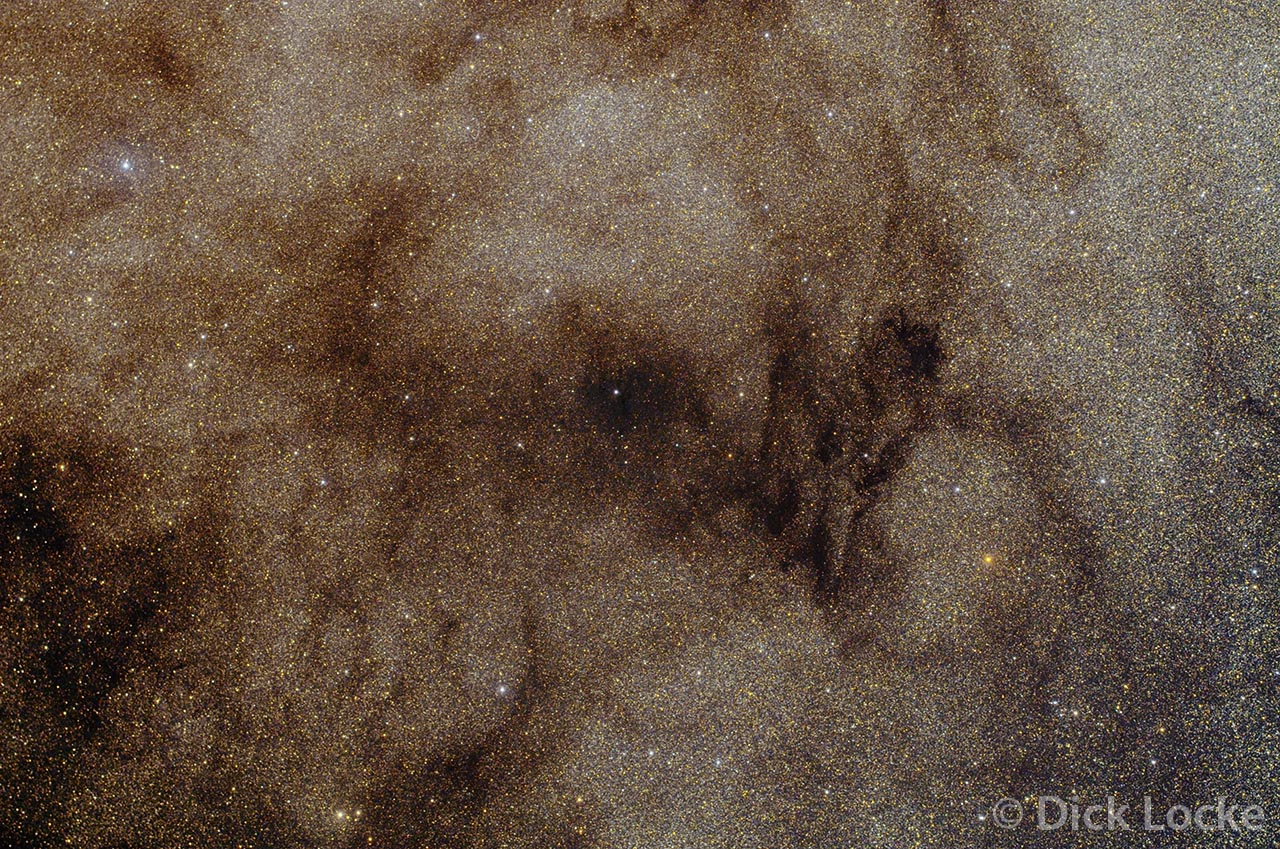
Barnard Dark Nebula 268 and 270 Area
(B268 and B270 with Mouseover)
The Pipe Nebula area contains some of the more interesting objects in the sky, including a number of dark nebulae. Some nearby objects such as B72, B261, B262, and B67 are shown on my Snake Nebula Page and not repeated here. Most images are from the Spring 2014 Davis Mountains trip. Some are from the Spring 2016 Davis Mountains trip!

This consists of 2 hours total exposure with the Takahashi FSQ-85 telescope with reducer and QHY8 one shot color CCD camera. Move your mouse over the image to see a chart generated from "The Sky X" showing the Barnard Dark Nebula (they have numbers) and Lynd's Dark Nebula in the frame. Barnard objects shown include B268 center and B270 right. You can see that actual position of the dark nebulae don't always match exactly what you see on the chart.
This is from the Spring 2016 Davis Mountains trip.
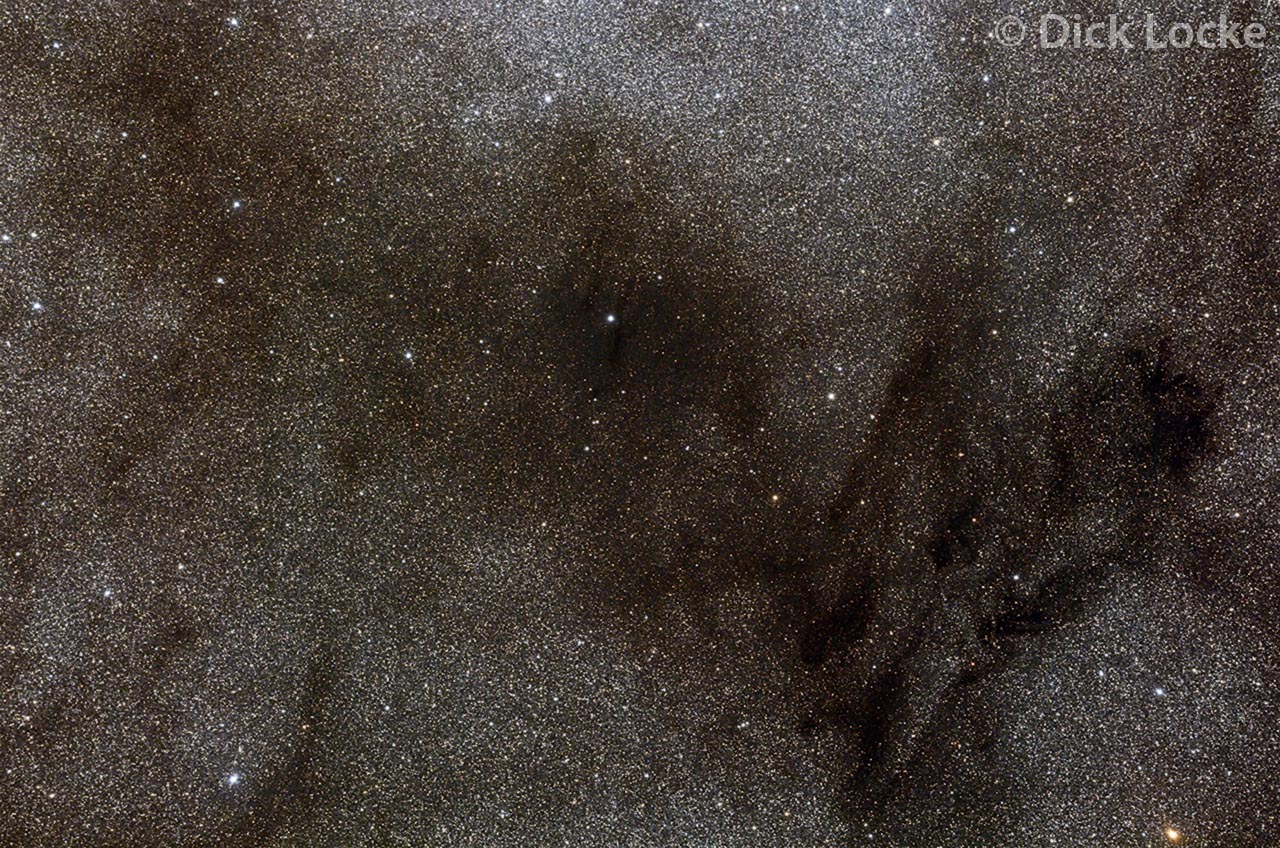
Barnard 268 in the middle center, with B270 on the right middle. Amazing, RegiStar counts 120,064 stars in the full-sized version of this image!
This is the same area of the sky as the previous image, but this time with the Takahashi TOA 130 telescope & flattener, along with the and the Nikon D810A camera. It consists of 21 * 5 minute exposures, and on this one I blended in the 2 hr FSQ 85 image to reduce the noise in the darker areas. My equipment rides on the AP 900GTO mount. My processing techniques are discussed here.
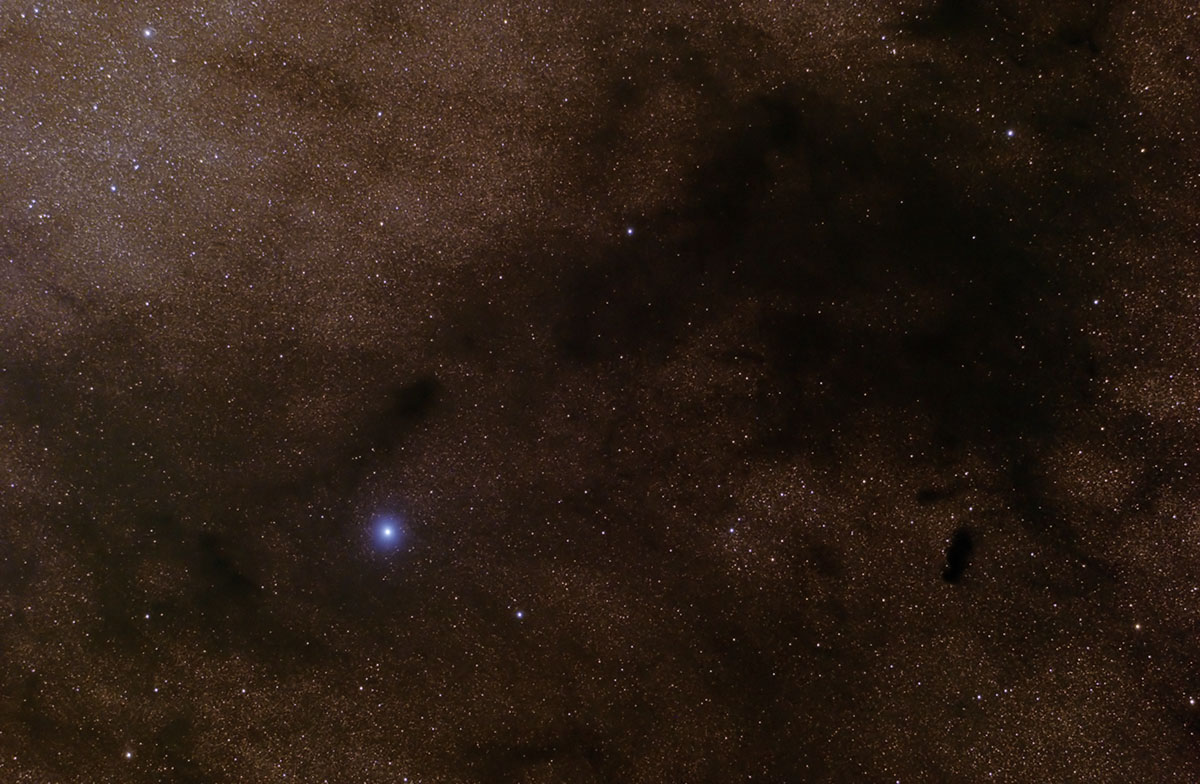
B78 is the Bowl of the Pipe with an opacity of 5 (also known as LDN 42) 200′ x 140′ RA: 17h 33m Dec: −26° 30′. The bright (mag 6.05 per "TheSkyX") blue star is HIP 85783 (SAO 185474). Barnard 78 is shown on Barnard's chart 20 and chart 21.
Image details: From the Spring 2014 Davis Mountains trip, the image above consists of 12*5 minutes through the TOA 130 telescope with reducer and QHY8 "color" CCD camera, along with 13*5 minutes through the from the SBIG ST-8300m monochrome camera, luminance filter, and the Takahashi FSQ-85 telescope with reducer (328mm focal length). My equipment rides on the AP 900GTO mount. My processing techniques are discussed here, but on this one I used the monochrome image specifically to reduce the noise in the darker areas. After aligning the two images in Registar, I then used and inverse FSQ image as a mask (allowing only the darker areas to come through). By blending in the FSQ image the noise in the dark/low signal areas was significantly reduced.

This is the luminance component of the image shown above. Exposure was 65 minutes; details are presented above with preceding picture.
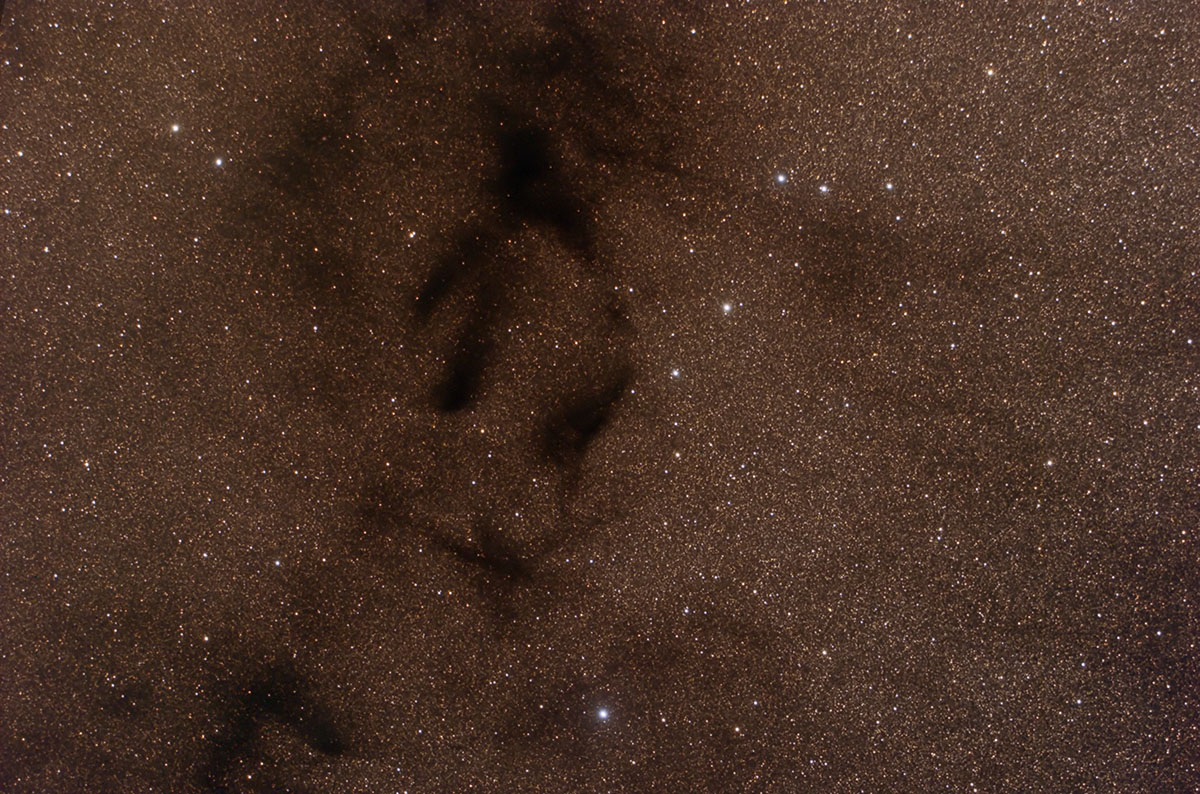
Barnard 67 is in the stem area of the pipe nebula. B65 and B66 are in the frame as well. B67 is the large dark blotch towards the top. B65 is in the middle, while B66 is slightly above and to the left. Barnard's chart 21 shows this area.
Image details: From the Spring 2014 Davis Mountains trip, the image above consists of 20*5 minutes through the TOA 130 telescope with reducer and QHY8 "color" CCD camera, along with 17*5 minutes through the from the SBIG ST-8300m monochrome camera, luminance filter, and the Takahashi FSQ-85 telescope with reducer (328mm focal length). My equipment rides on the AP 900GTO mount. My processing techniques are discussed here, but on this one I used the monochrome image specifically to reduce the noise in the darker areas. After aligning the two images in Registar, I then used and inverse FSQ image as a mask (allowing only the darker areas to come through). By blending in the FSQ image the noise in the dark/low signal areas was significantly reduced. I blended the monochrome at about 30% on this one.
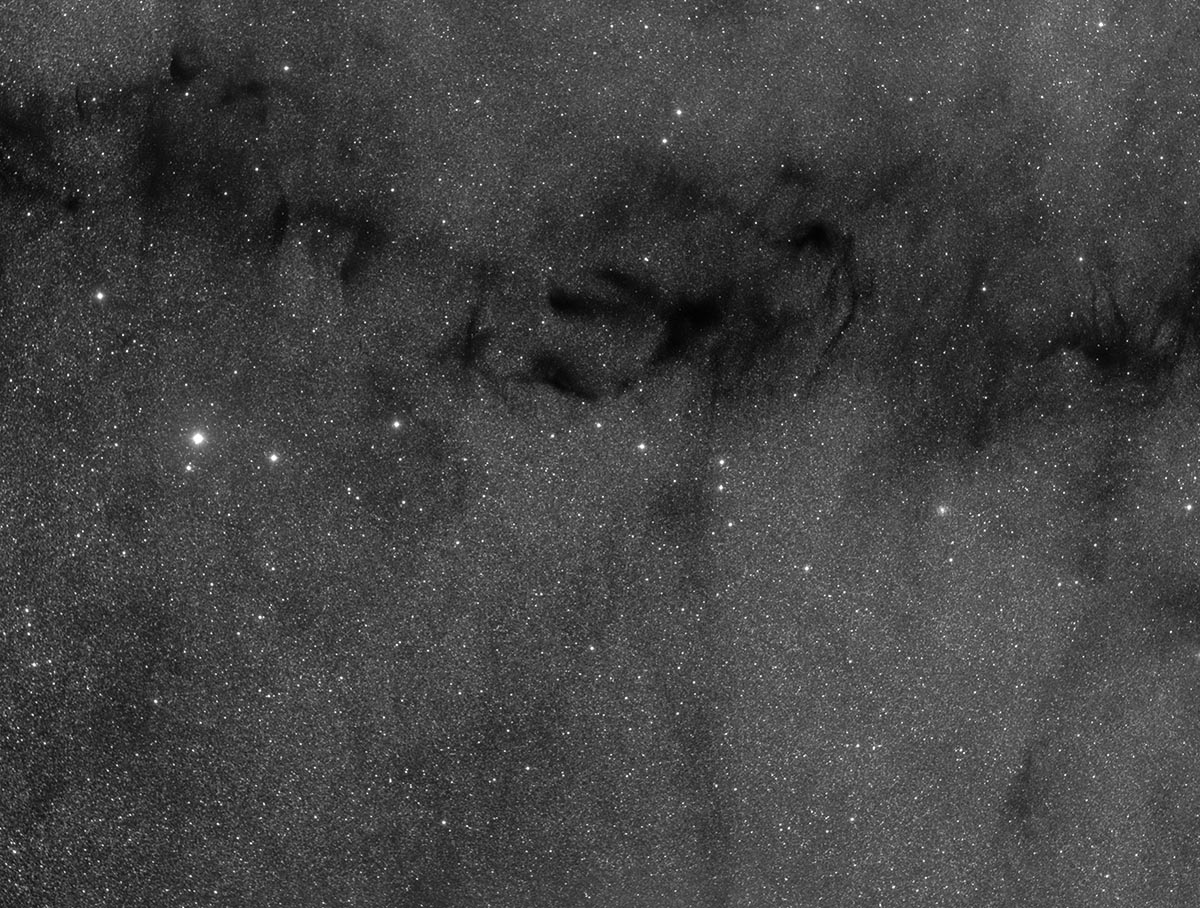
This is the monochrome component of the image above.

The dark area running from the lower left to upper mid-right is B63, while B62 is the dark splotch to the right. Barnard's chart 19 shows this area well. Barnard's chart 21 also shows this area. Reflection nebula Vdb 110 is just to the left of B62, it's small and is barely visible.
Image details: From the Spring 2014 Davis Mountains trip, the image above consists of 8*5 minutes through the TOA 130 telescope with reducer and QHY8 "color" CCD camera, along with 8*5 minutes through the from the SBIG ST-8300m monochrome camera, luminance filter, and the Takahashi FSQ-85 telescope with reducer (328mm focal length). My equipment rides on the AP 900GTO mount. My processing techniques are discussed here, but on this one I used the monochrome image specifically to reduce the noise in the darker areas. After aligning the two images in Registar, I then used an inverse FSQ image as a mask (allowing only the darker areas to come through). By blending in the FSQ image the noise in the dark/low signal areas was significantly reduced. I blended the monochrome at about 45% on this one.

This frame shows a number of dark nebula. B61 is the small blob mid lower left. B62 is above that, while B63 is the large crescent shaped area. To the right is B67a. Back to upper left, the dim dark area above the left side of B63 is B253, while B246 and B60 are above and left of that.
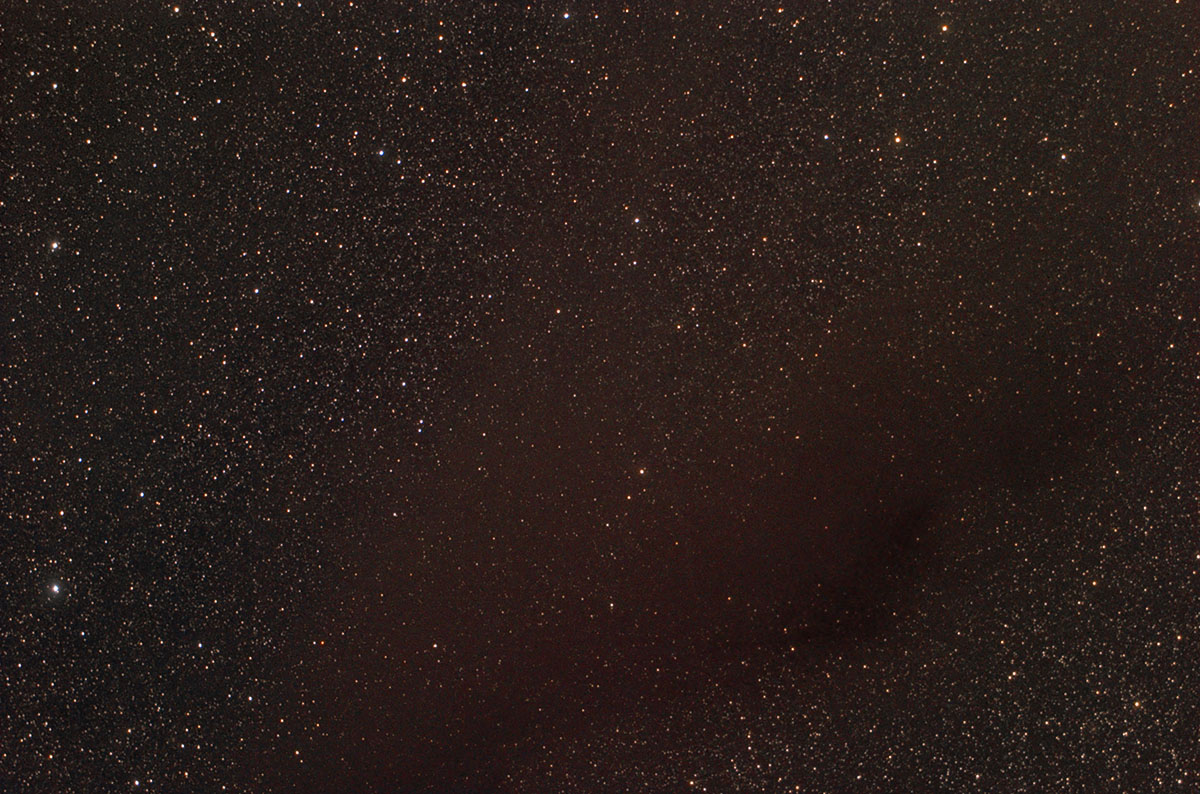
This is about halfway between Antares & the Pipe Nebula, it's part of the streaming dark dust lane structure sometimes called the Dark River. (See the APOD "Dark River to Antares" here. Barnard's plate 14 shows this area.
Image details: Even with 2.3 hours exposure this dim area was a major challenge to process. The image is sourced from the Spring 2014 Davis Mountains trip, and consists of 14*5 minutes through the TOA 130 telescope with reducer and QHY8 "color" CCD camera, along with 15*5 minutes through the from the SBIG ST-8300m monochrome camera, luminance filter, and the Takahashi FSQ-85 telescope with reducer (328mm focal length). My equipment rides on the AP 900GTO mount. My processing techniques are discussed here, but on this one I used the monochrome image specifically to reduce the noise in the darker areas. After aligning the two images in Registar, I then used an inverse FSQ image as a mask (allowing only the darker areas to come through). By blending in the FSQ image the noise in the dark/low signal areas was significantly reduced. I blended the monochrome at about 45% on this one.
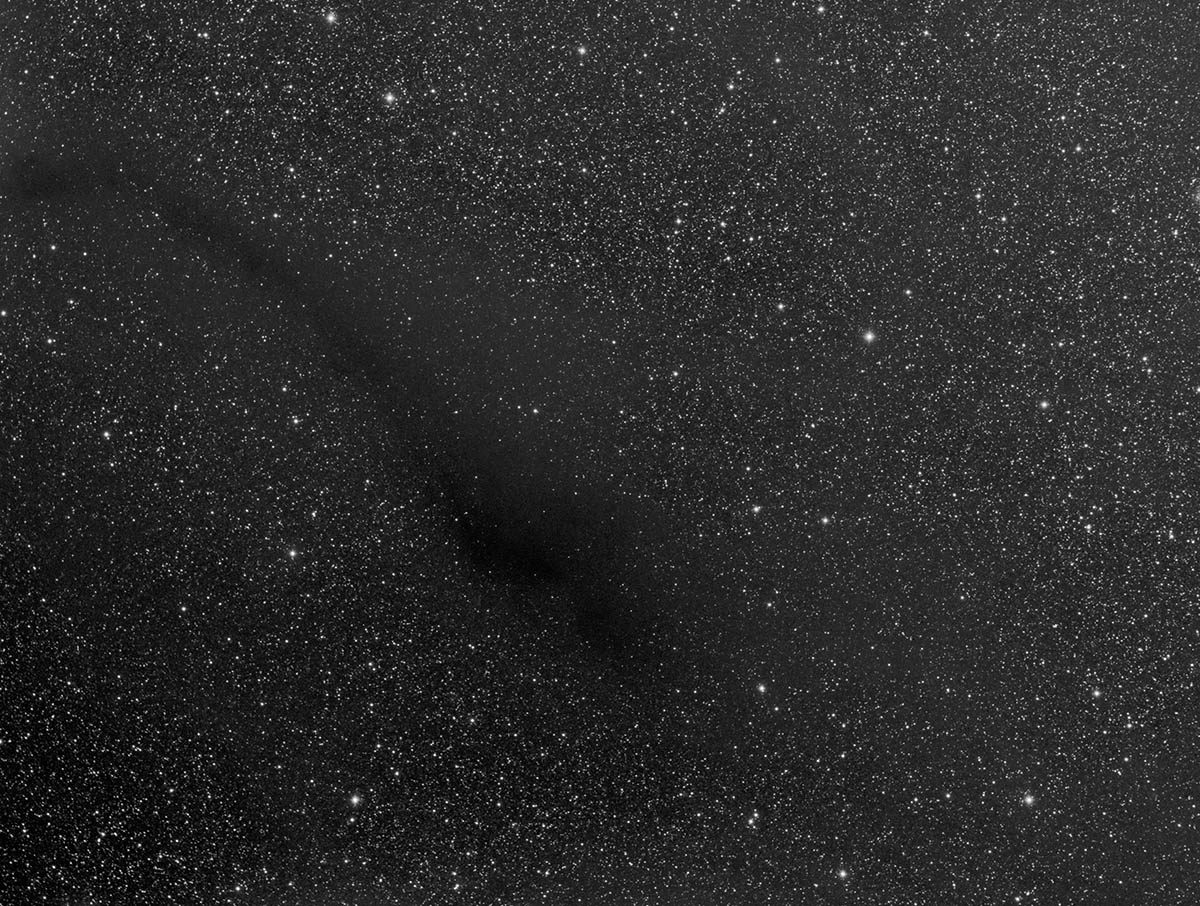
This is the luminance image blended into the preceding picture.
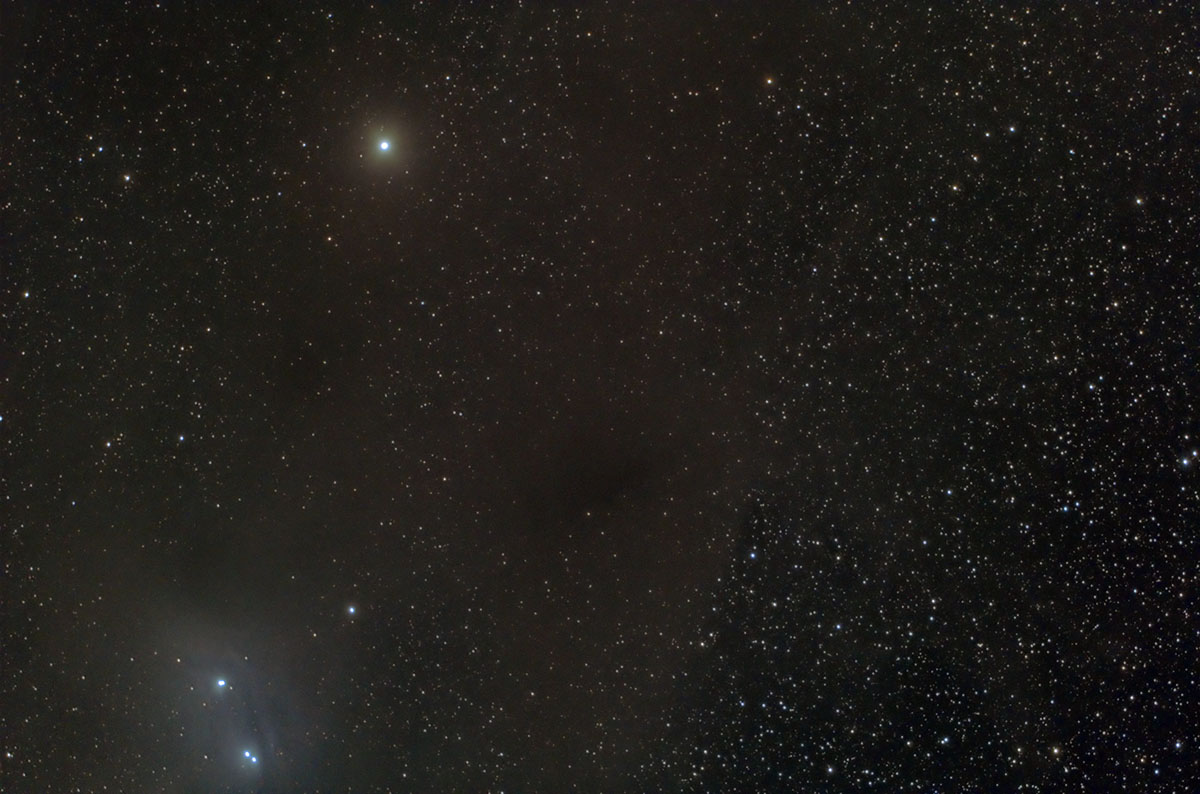
That's IC4601 in the lower left, scroll down to see that stand-alone. The bright star on top left is 4-Psi Ophiuchi shining at mag 4.5. B41 is on chart 12.
Image details: The image is sourced from the Spring 2014 Davis Mountains trip, and consists of only 5*5 minutes through the TOA 130 telescope with reducer and QHY8 "color" CCD camera, along with 7*5 minutes through the from the SBIG ST-8300m monochrome camera, luminance filter, and the Takahashi FSQ-85 telescope with reducer (328mm focal length). My equipment rides on the AP 900GTO mount. My processing techniques are discussed here, but on this one I used the monochrome image specifically to reduce the noise in the darker areas. After aligning the two images in Registar, I then used an inverse FSQ image as a mask (allowing only the darker areas and a bit of luminance to come through). By blending in the FSQ image the noise in the dark/low signal areas was significantly reduced. I blended the monochrome at about 50% on this one.
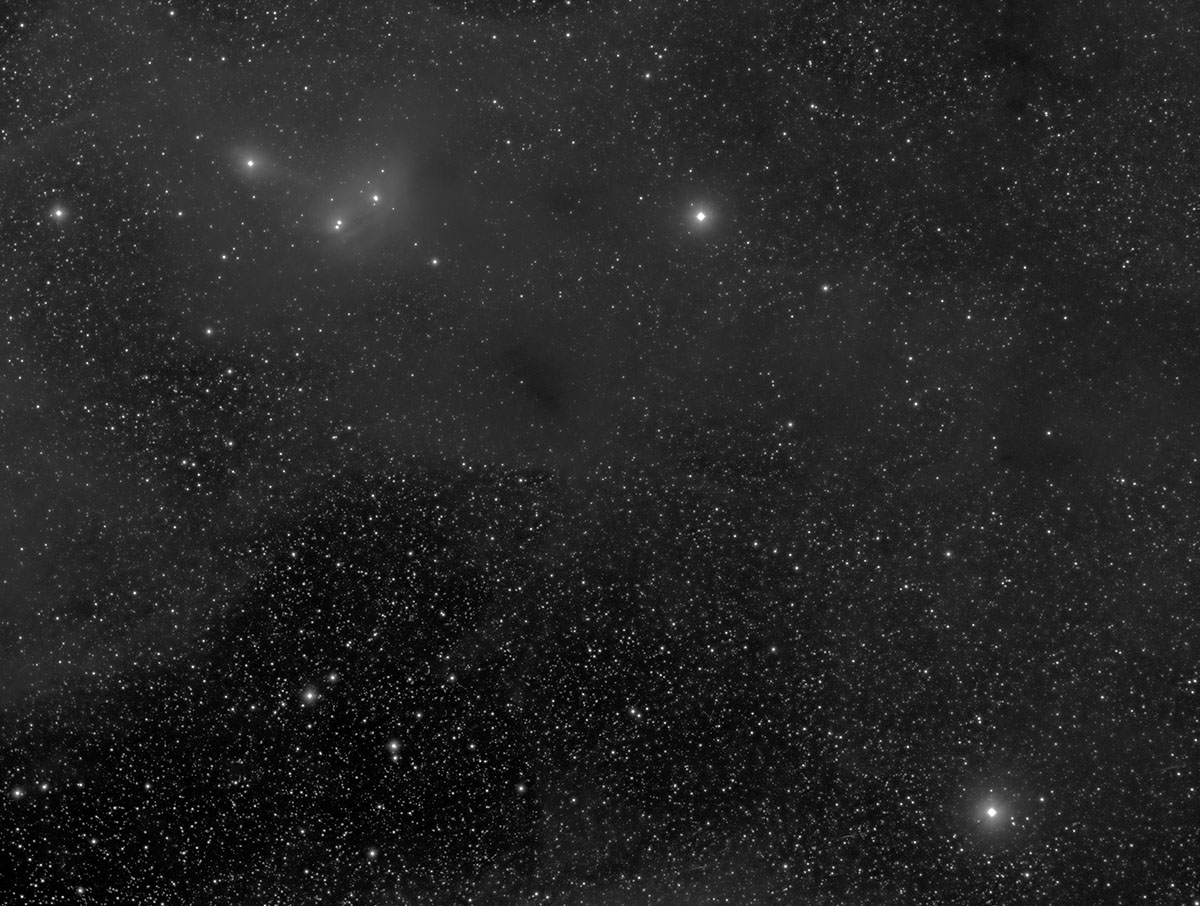
This is the luminance image described above.
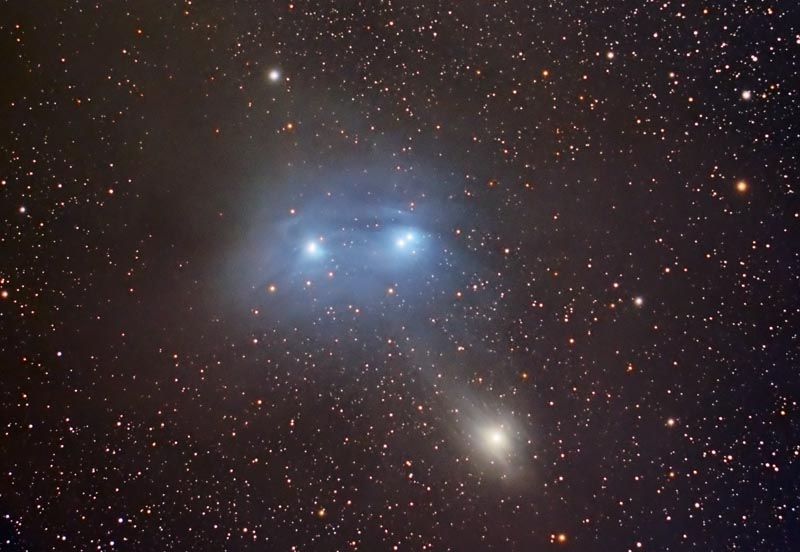
This is the interesting area shown on the previous images. More info on IC4601, and nearby prime focus images, is on my Antares area prime focus page.
External Link: This Tom Martinez page has a nice guide to the dark nebula in the pipe area under the "Galactic Dark Horse" section.

Dark Nebula PicturesSnake Nebula Prime Focus Pictures Here
Antares Area, Prime Focus and Antares area widefield

Antares Area: The Sky's Best!
Rho Ophiuchi Nebula, IC 4603, IC 4604
Copyright © by Dick Locke. All Rights Reserved.
Contact and Image Use Information
hits since 8/3/2014 inception.